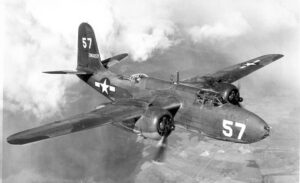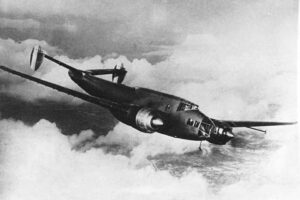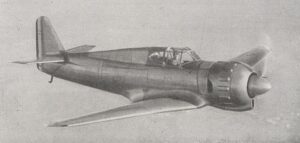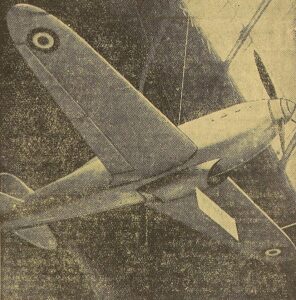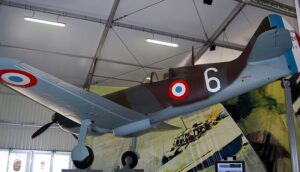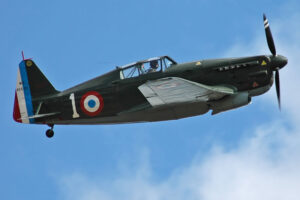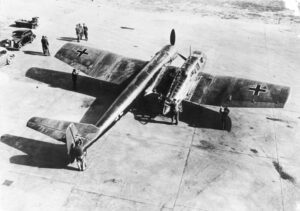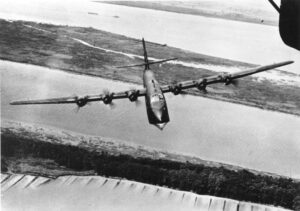Photo reconnaissance, also known as aerial reconnaissance, played a crucial role in both World War I and World War II by providing valuable intelligence and imagery to military commanders. But what did it mean to do photo reconnaissance during the First World War and World War II?
Photo reconnaissance played a significant role in strategic decision-making and helped shape the course of battles and campaigns. It provided commanders with accurate and up-to-date information, allowing for a better understanding of the enemy’s strengths and weaknesses. It also aided in the identification of suitable landing zones, the evaluation of battlefield conditions, and the assessment of damage caused by bombing raids.
Here’s what it meant to be in charge of an aircraft tasked with doing photo reconnaissance during the Great War and World War II.
What is Photo Reconnaissance and Why Does It Matter?
Photo reconnaissance involves the use of specially equipped aircraft to capture aerial photographs of enemy territory, front lines, and key strategic locations. In other words, it is a method of gathering intelligence by capturing aerial photographs of the Earth’s surface using specialized cameras mounted on aircraft. It typically involves flying over a targeted area and systematically capturing photographs that provide visual information about the terrain, enemy activities, military installations, and other relevant features.
Overall, photo reconnaissance proved instrumental in gathering intelligence and providing critical situational awareness during both World War I and World War II. It greatly contributed to the success of military operations and played a vital role in the overall strategic planning and execution of the wars.
In addition to military applications, photo reconnaissance has also been employed for civilian purposes, such as mapping, environmental monitoring, and disaster assessment. It continues to be a valuable tool in various fields where visual information from an aerial perspective is essential.
Photo Reconnaissance During World War I
Photo reconnaissance has evolved significantly over time, from the early use of manned aircraft in World War I to the deployment of advanced unmanned aerial vehicles (UAVs) and satellite-based imaging systems in modern warfare.
However, it all started in WW1.
During World War I, photo reconnaissance was a relatively new concept, and advancements in aviation technology allowed for the development of dedicated reconnaissance aircraft. These aircraft were equipped with cameras and flown over enemy territory to capture detailed photographs.
The photographs were then analyzed by intelligence officers to gather information about enemy troop movements, fortifications, artillery positions, and other crucial intelligence.
Here are a few examples of planes used for photo reconnaissance during WW1:
Royal Aircraft Factory R.E.8: The R.E.8 (Reconnaissance Experimental 8) was a British two-seat biplane primarily designed for reconnaissance missions. It had a dedicated observer in the rear cockpit responsible for operating the camera equipment and capturing aerial photographs.
Sopwith 1½ Strutter: The Sopwith 1½ Strutter was a versatile British biplane used for various purposes, including reconnaissance. It had a two-seat configuration, with the observer in the rear seat responsible for conducting photo reconnaissance missions and capturing valuable imagery.
Albatros C.III: The Albatros C.III was a German reconnaissance aircraft widely used during World War I. It featured a two-seat arrangement, with the observer in the rear cockpit equipped with a camera to capture aerial photographs.
Farman F.40: The Farman F.40, a French biplane, was specifically designed for long-range reconnaissance and artillery spotting. It had a large fuselage that accommodated the pilot and observer, as well as the necessary camera equipment for aerial photography.
Bristol F.2B Fighter: While primarily known as a fighter aircraft, the Bristol F.2B Fighter also saw service as a reconnaissance platform. Its two-seat configuration allowed for a dedicated observer to conduct photo reconnaissance missions, providing valuable visual intelligence.
Photo Reconnaissance During the Second World War
Photo reconnaissance became even more critical during World War II with the advancement of aviation technology and the increased use of aerial warfare. Both Allied and Axis forces extensively employed aerial reconnaissance to gather intelligence and gain a tactical advantage.
Reconnaissance aircraft, such as the British Supermarine Spitfire and the American P-38 Lightning, were equipped with high-resolution cameras and flown deep into enemy territory to capture detailed imagery. These aircraft often flew at high altitudes and at great risk to collect vital information about enemy troop deployments, supply routes, airfields, industrial facilities, and other military targets.
So, here are a few more examples of planes used for photo reconnaissance during WW2:
Supermarine Spitfire PR variants: The Supermarine Spitfire, a renowned British fighter aircraft, had specialized photo reconnaissance variants, such as the Spitfire PR Mk XI and PR Mk XIX. These variants were equipped with cameras and modified to carry out high-speed, high-altitude reconnaissance missions.
Lockheed P-38 Lightning F-5 variants: The P-38 Lightning, an American twin-engine fighter aircraft, had dedicated reconnaissance variants known as the F-5. These variants were fitted with cameras and had their armament removed to accommodate the necessary equipment for photo reconnaissance missions.
- North American P-51 Mustang F-6 variants: The P-51 Mustang, another iconic American fighter aircraft, had reconnaissance versions designated as the F-6. These variants were equipped with cameras and performed photo reconnaissance missions, providing valuable imagery over enemy territory.
- Focke-Wulf Fw 190 F-8/R8: The Focke-Wulf Fw 190, a German single-seat fighter aircraft, had specialized variants adapted for photo reconnaissance. The Fw 190 F-8/R8 model was specifically designed for long-range reconnaissance missions and featured camera equipment in place of its armament.
- de Havilland Mosquito PR variants: The de Havilland Mosquito, a versatile British aircraft, had photo reconnaissance versions known as the PR variants. The Mosquito PR variants, such as the PR Mk XVI, were equipped with cameras and operated at high altitudes to gather intelligence over enemy territory.
Conclusion: Photo Reconnaissance and the Wars
Photo reconnaissance has evolved significantly over time, from the early use of manned aircraft in World War I to the deployment of advanced unmanned aerial vehicles (UAVs) and satellite-based imaging systems in modern warfare. Technological advancements have improved the quality and capabilities of cameras, allowing for greater precision and versatility in gathering visual intelligence.
One thing is certain: Visual intelligence is a unique tool, capable of helping to build a comprehensive understanding of the battlefield, supporting decision-making processes and tactical planning. It’s no surprise, then, that this technology has been used in both wars.








